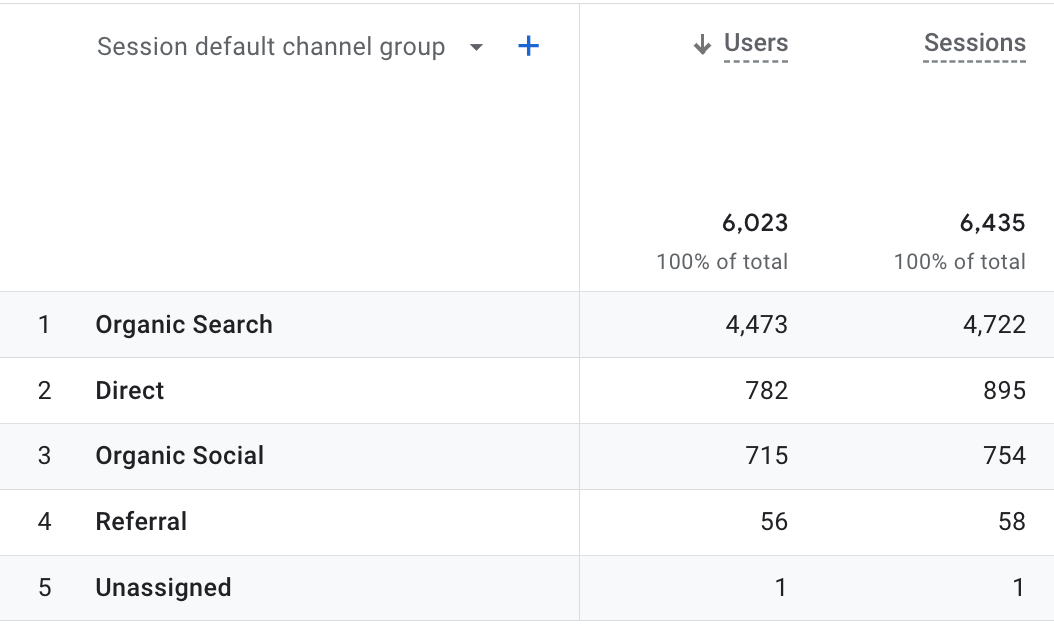Unlock Deeper Insights With Second Dimension in Google Analytics
With the huge area of information offered in Google Analytics, the use of additional dimensions can dramatically enrich your logical abilities. These extra layers of information offer a nuanced viewpoint that can light up complex information within your primary metrics. By purposefully incorporating second dimensions right into your analysis, you can unearth useful insights that may or else continue to be undiscovered. The capacity to divide and translate individual behavior with better precision opens a world of possibilities for improving and optimizing strategies efficiency.
Understanding Main Vs. Second Dimensions
When analyzing data in Google Analytics, it is necessary to compare main and second measurements to obtain much deeper insights right into user habits. Key measurements are the major classifications through which you can view your data, such as touchdown, source/medium, or device web page. These measurements supply the essential framework for organizing and understanding your data. On the other hand, second dimensions enable you to more study your main measurement information. By adding a secondary dimension, you can layer on added details to your main measurement, allowing an extra granular evaluation. If your primary dimension is the source/medium via which individuals showed up on your site, including a second dimension like geographical location can expose where those customers are located geographically. When looking at the key dimension alone, this added layer of info can aid you recognize patterns, patterns, or anomalies that may not have been obvious. Leveraging both second and key measurements in Google Analytics is critical for comprehensive data analysis and educated decision-making.
Utilizing Additional Measurements Efficiently
Successfully making use of additional dimensions in Google Analytics improves the deepness and granularity of data analysis, supplying beneficial understandings into customer habits and trends. By integrating additional measurements together with main measurements, marketing professionals and analysts can dig much deeper into the specifics of customer interactions on their internet sites. Additional dimensions permit users to segment and filter main measurement data even more, offering a more detailed view of user habits, interactions, and demographics. This can be particularly valuable when attempting to comprehend the effect of certain variables on user interaction, such as the gadgets or web browsers they are using, the sources of their web traffic, or their geographic places.
Furthermore, secondary dimensions make it possible for individuals to compare and contrast different information points within a solitary record, promoting a more extensive analysis of customer actions patterns. By leveraging additional measurements efficiently, companies can discover hidden understandings, optimize their advertising and marketing strategies, and boost the overall user experience on their internet sites.
Exploring Typical Second Measurement Mixes
To additionally evaluate user actions and patterns in Google Analytics, it is beneficial to check out common mixes of second measurements. Some usual second measurement mixes that give valuable insights include examining website traffic sources with user places to comprehend where site site visitors are coming from geographically and how they discovered the website. Taking a look at customer habits metrics with second measurements such as demographics or rate of interests can help in targeting certain target market sectors much more efficiently.
Using Second Measurement in Customized Reports
Using second measurements in custom records allows for an extra detailed evaluation of information in Google Analytics, boosting the depth of understandings acquired. When creating custom-made reports in Google Analytics, integrating secondary dimensions can offer a much more thorough sight of exactly how various dimensions connect with each other. This function enables users to dive deeper right into their data and reveal beneficial connections that might not be promptly apparent.
By using secondary measurements in custom-made records, users can gain a far better understanding of their internet site or app website traffic. For example, integrating the primary measurement of "source/medium" with the second dimension of "landing page" can reveal which touchdown pages are performing go to this web-site best for web traffic originating from certain resources. This insight can aid marketing experts optimize their projects and boost general conversion rates.

Enhancing Information Visualization With Additional Dimension
When exploring data in Google Analytics personalized records, incorporating secondary dimensions not just supplies an extra detailed evaluation however likewise boosts the aesthetic representation of insights via information visualization. By adding a second measurement to your reports, you can improve the means information is presented, making it easier to determine patterns, fads, and connections within your internet site's efficiency metrics.
Secondary dimensions can assist you segment your information further, permitting for a deeper understanding of user behavior and communications on your website. When trying to separate particular variables that may impact your website's performance., this boosted degree of granularity can be especially useful.

Verdict
In verdict, leveraging second dimensions in Google Analytics permits an extra extensive analysis of information, resulting in deeper understandings and more informed decision-making. Secondary Dimension in Google Analytics. By including additional layers of information to key data collections, marketing experts and analysts can reveal concealed patterns, patterns, and relationships that offer a granular view of customer habits and interactions. This enhanced degree of understanding makes it possible click reference for optimization of campaigns and Look At This customized techniques for particular audience segments, ultimately enhancing efficiency and conversion prices
On the other hand, second measurements permit you to additional study your primary dimension information. By including a secondary measurement, you can layer on additional information to your key dimension, enabling an extra granular evaluation. If your main dimension is the source/medium via which users got here on your site, adding an additional dimension like geographical location can expose where those users are situated geographically. By incorporating secondary measurements alongside primary dimensions, marketing professionals and experts can dive much deeper into the specifics of individual interactions on their websites. Additional dimensions enable customers to section and filter primary dimension data even more, supplying a much more in-depth sight of customer habits, demographics, and communications.